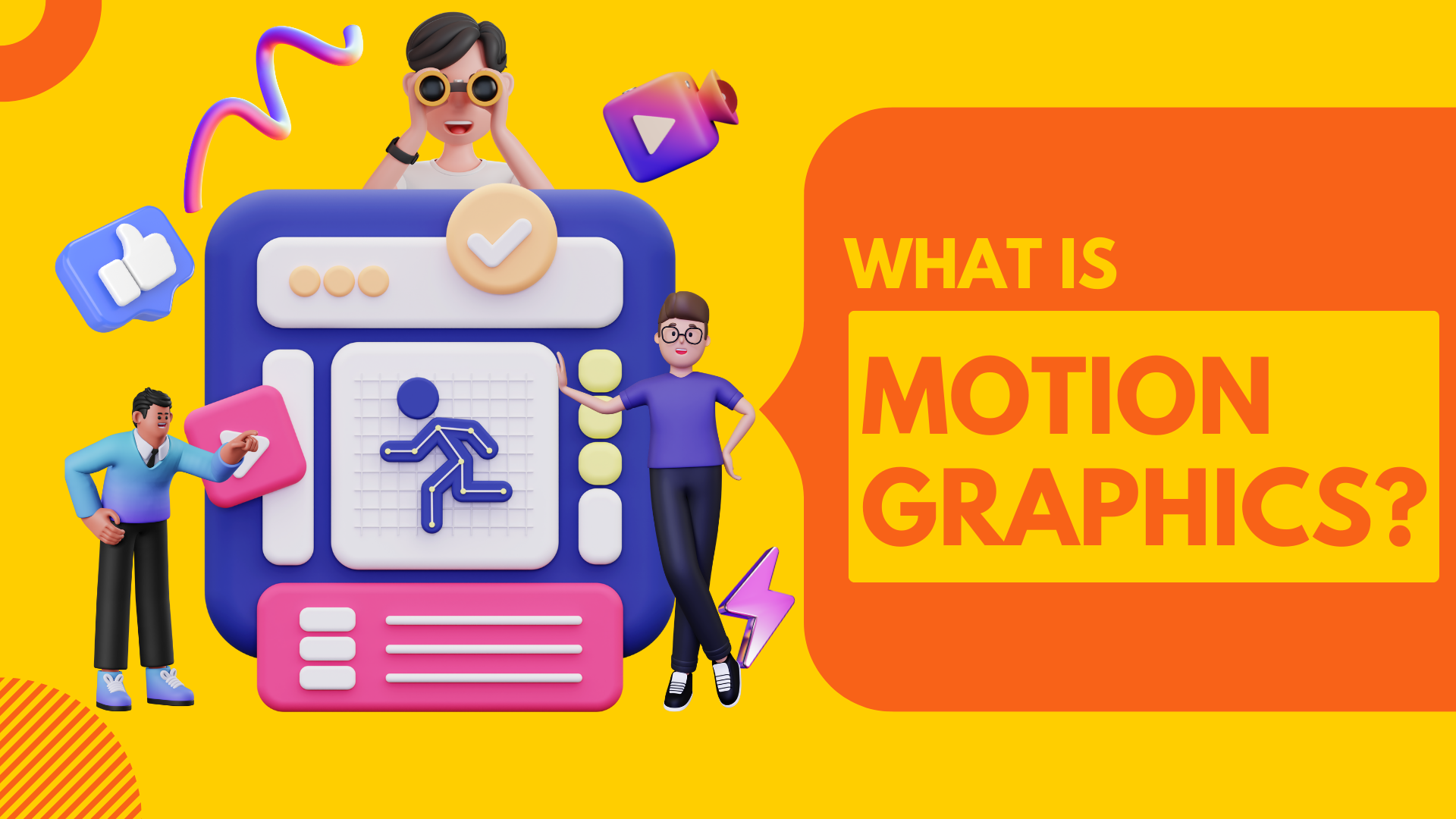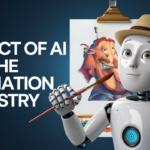Motion graphics combine graphic design, animation, and cinematography to create the illusion of movement or rotation, creating dynamic and aesthetically pleasing animations.
Motion graphics tell a story or convey a message using text, images, and graphics, unlike traditional animation. It is found in many digital media, such as videos, websites, presentations, television, and movies. Animated graphics are used to convey information.
Some examples of Motion Graphics
Motion graphics are the dynamic storytellers of the digital age, seamlessly combining design, animation, and sound to create compelling visual stories.
Cinema and television: There’s no doubt that the title sequence of a film or television production sets the tone for the story, as evidenced by shows like “Game of Thrones” and “Stranger Things.”
Advertisement: Motion graphics can also be used in advertising to bring brands to life with animated logos, product presentations, and promotional videos.
Social media content: Motion graphics have become an essential part of social media content, with animated infographics, engaging short videos, and interactive posts capturing the attention of online audiences.
Build websites: By incorporating animation and transitions into web design, motion graphics improve user experience.
Additionally, in explainer videos, complex ideas are simplified with motion graphics, making educational content more engaging and accessible. The use of animation enhances storytelling across multiple platforms, from music videos to educational presentations to mobile apps, showing how innovative this medium can be. How to create in our digital age.
Let’s Talk About the History of Motion Graphics
Through the fusion of art, technology, and entertainment, motion graphics have taken a fascinating journey through history. Oskar Fischinger and Len Lye explored the possibility of combining moving images with abstract images in the early 20th century when their origins lie in this era. However, in the mid-20th century, graphic animation found its true calling in television and cinema.
Movie title sequences were revolutionized in the 1950s and 1960s by pioneers like Saul Bass. In films like Alfred Hitchcock’s “Psycho” and Otto Preminger’s “Anatomy of Murder,” he demonstrated the power of visually appealing introductions, laying the foundation for animated graphics. (source : wikipedia)
During the digital revolution of the late 20th century, motion graphics entered a new era as technology evolved. With the development of computer-generated imagery (CGI) and sophisticated software, designers have been able to create complex animations and visual effects. Thanks to this technological leap, motion graphics have become an integral part of our lives, from television commercials and video games to interactive websites and mobile applications.
It’s no surprise that motion graphics have become an integral part of 21st-century digital media. From dynamic web interfaces to immersive virtual reality experiences, motion graphics continue to push the boundaries of creativity and advance visual storytelling in ways that captivate and engage audiences around the world.
The history of motion graphics is more than just a chronological progression; it is also a testament to human creativity, artistic expression, and the combination of advanced technology and ingenuity.
Explaining the Concept of Motion Graphics in Depth
To begin with, Motion graphics is the manipulation of visual elements to create a sense of motion and engagement. To create aesthetically pleasing animations that are meaningful and engaging, design principles, such as balance, contrast, and rhythm, are applied. In addition to film and television, motion graphics are used in marketing, web design, and education, among other fields.
Through motion graphics, complex information becomes accessible, allowing it to simplify intricate concepts. Its power lies in its ability to evoke emotions, enhance understanding, and create memorable experiences. With seamless integration of animation, typography, and audio, motion graphics transform ordinary visuals into extraordinary narratives, captivating audiences and leaving a lasting impression.
How to Make Motion Graphics: A Step-by-Step Process!
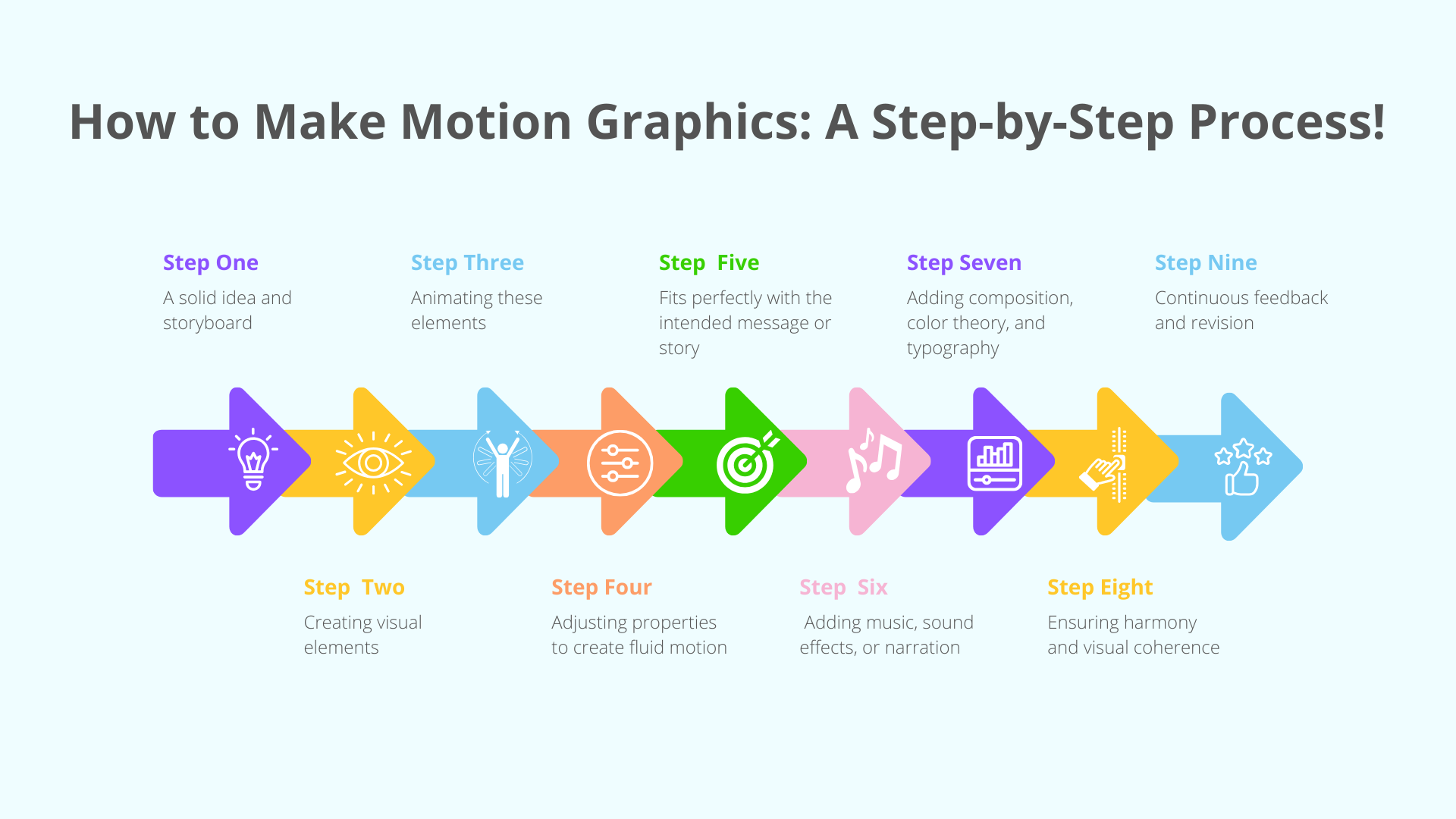
Creating compelling motion graphics requires a thoughtful combination of creativity, technical skill, and attention to detail.
- The process begins with a solid idea and storyboard, outlining visual storytelling and transitions.
- Designers and animators will then collaborate to create visual elements, including typography, shapes, and images that will be animated.
- The next step is to animate these elements using specialized software such as Adobe After Effects or Cinema 4D.
- Animators meticulously manipulate keyframes, adjusting properties such as position, scale, rotation, and opacity to create fluid motion.
- Timing and rhythm are very important; they decide the pace and flow of the animation, ensuring that it fits perfectly with the intended message or story.
- Sound design plays an important role in enhancing the visual experience. Adding music, sound effects, or narration will synchronize with the animation, creating a multi-sensory impact for the viewer.
- Additionally, mastering design principles, such as composition, color theory, and typography, is fundamental.
- These principles guide the arrangement of elements, ensuring harmony and visual coherence.
- Continuous feedback and revision are an integral part of this process.
What Are Motion Graphics Used For?
You can now say that motion design is the most important tool for many industries. As it is transforming the way information is presented and experiences conveyed
Marketing and advertising is one of the major fields where motion graphics enhance brand messages through visually appealing ads, product presentations, and promotional videos. It attracts attention and makes content more engaging and shareable.
As we discussed above In web design, motion graphics enhance user interfaces, guiding visitors through web pages with interactive animations, transitions, and visual cues. This eventually creates rich online experiences, ensuring users stay engaged and navigate seamlessly.
When it comes to educational purposes it benefits greatly from the animated graphics. One can easily simplify complex ideas which allows effective knowledge transfer.
You can say that for the media and entertainment industries motion graphics are the foundation. They improve the quality of film and television products.
Talking about business presentations and corporate communications motion graphics plays an important role. They turn the data-rich presentations into engaging and easy visualizations.
They also play an important role in mobile apps, guiding users and performing visual interactions with animated elements.
At their core, motion graphics are flexible storytellers, adapting to a variety of contexts and enriching communication with their dynamic and engaging visual language.
How Motion Graphics Engage Your Audience:
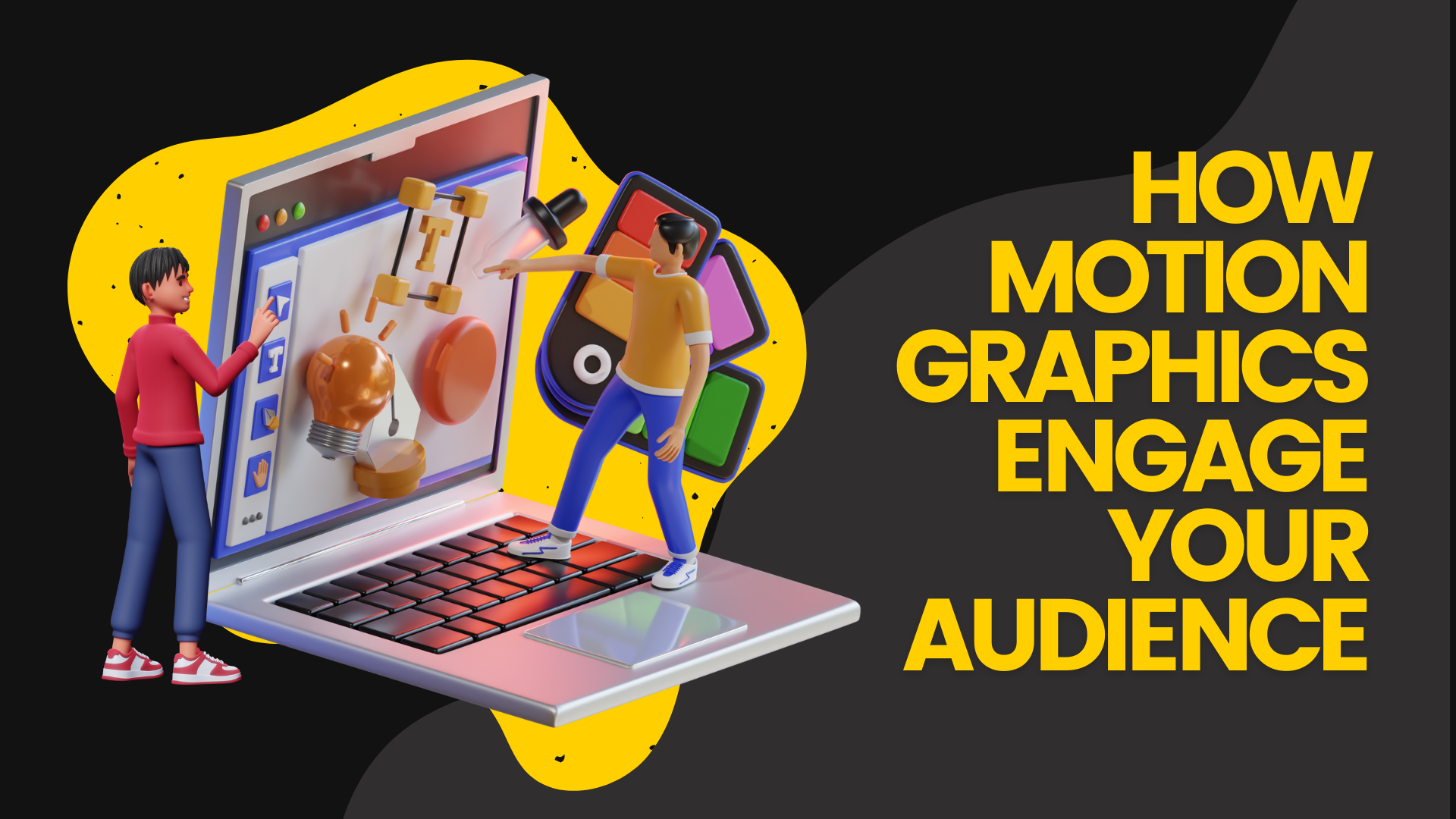
Motion graphics provide an engaging interactive tool by engaging audiences with dynamic visual storytelling. Unlike static content, motion graphics leverage movement, animation, and sound to create immersive experiences that instantly capture viewers’ attention. The human brain is naturally drawn to movement, and this innate response makes motion graphics an effective way to convey information and ideas.
First, animated graphics improve visual appeal, making content more aesthetic and stimulating.
Second, animated graphics help simplify complex concepts. Through animations and graphics, complex ideas are broken down into easy-to-understand segments.
Additionally, an emotional connection is established through animated graphics.
Therefore, integrating motion graphics into content strategies is a strategic choice for businesses and creators, ensuring that their messages are not only heard but also felt and registered by their audiences. remember deeply.
Benefits of Motion Graphics:
Adopting motion graphics offers countless benefits that greatly improve brand communication, engagement, and overall impact.
First, motion graphics promote engagement by capturing the audience’s attention with animation and animation.
Second, animated graphics simplify complex information, transforming complex data and concepts into visually appealing and easy-to-understand content.
Third, animated graphics convey a sense of professionalism and credibility. Visually appealing animations and sleek designs reflect the brand positively, building trust and credibility in the eyes of the audience.
Additionally, motion graphics enhance storytelling by allowing creators to evoke emotions and convey stories through images and animation.
How Motion Graphics Can Grow Your Business:
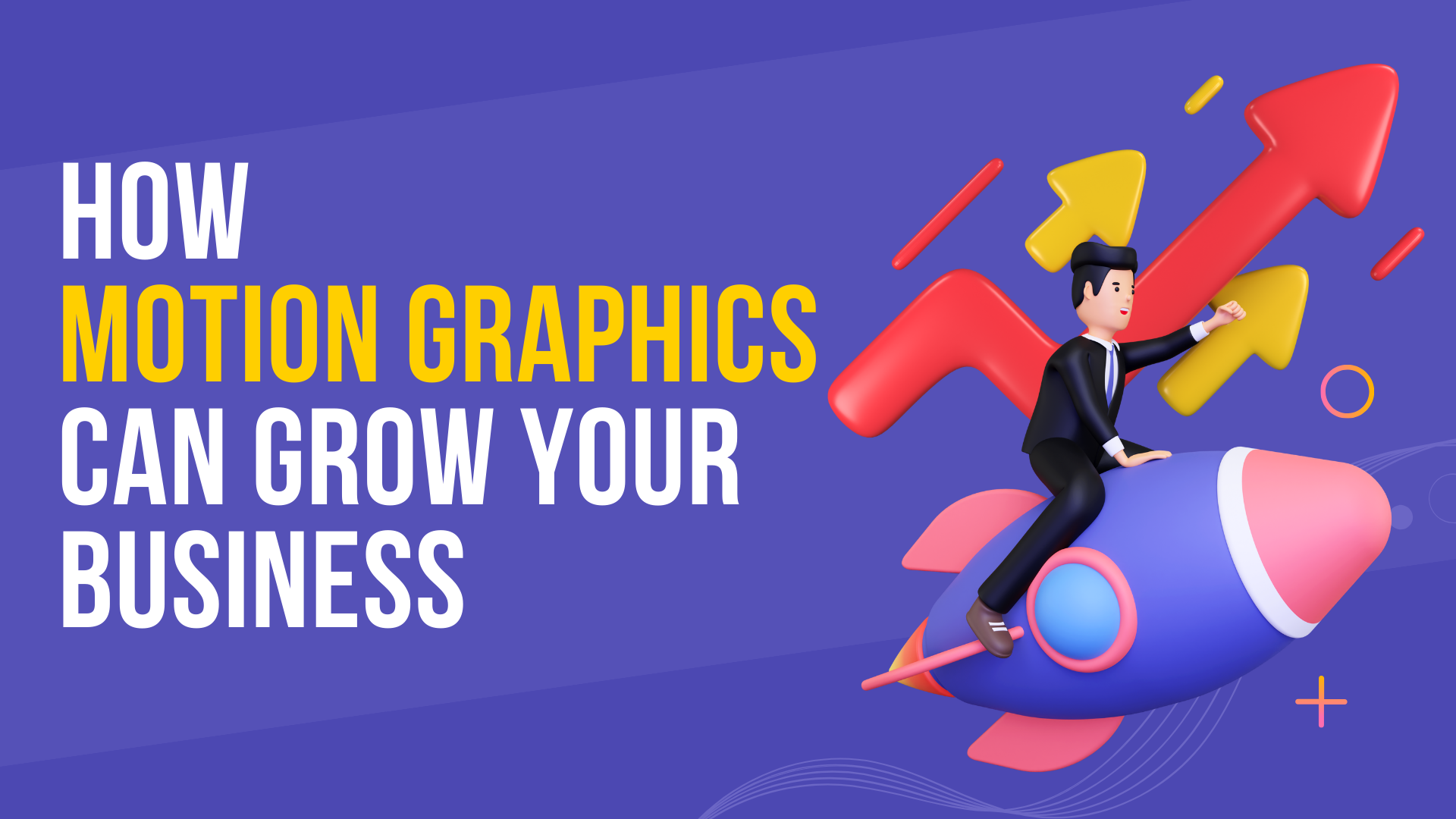
Motion graphics is a powerful tool that can significantly contribute to your business growth in the digital age.
- They improve brand visibility and recognition.
- Creative and visually appealing animations can leave a lasting impression on your audience, making your brand memorable in a sea of digital content.
- Motion graphics improve audience engagement and retention.
- By conveying your message in a visually appealing way, you can engage your audience, ensuring they understand your services and value proposition. Additionally, animated graphics can clarify complex concepts. Clear communication improves customer satisfaction and fosters positive relationships.
- Additionally, animated graphics are highly shareable on social media platforms.
- Animated graphics in marketing campaigns and product presentations will enhance your professional image.
The Final Takeaway,
Whether enhancing online presence or creating memorable marketing campaigns, motion graphics allow brands to leave a lasting impact in the hearts and minds of their audiences. In an image-driven world, the art and science of motion graphics not only enriches the digital landscape but also paves the way for businesses to thrive in the age of immersive storytelling.

